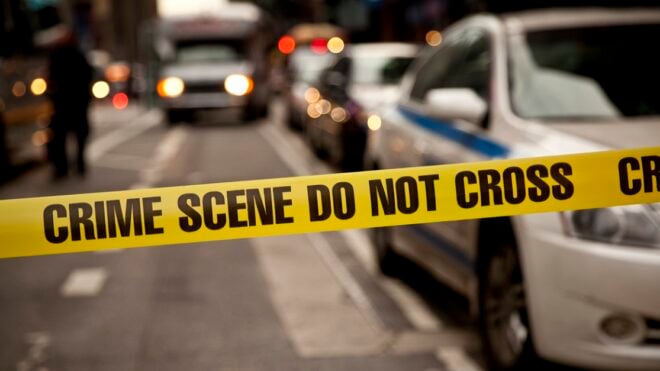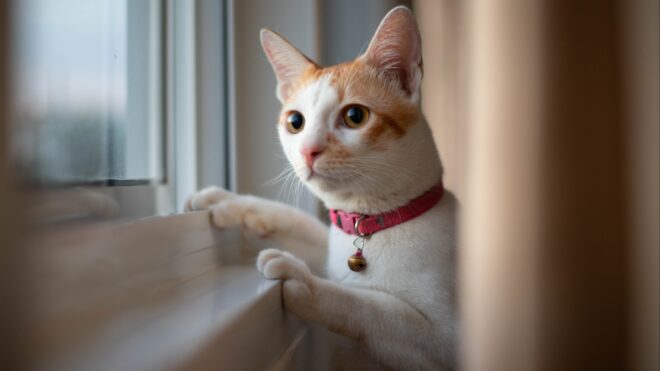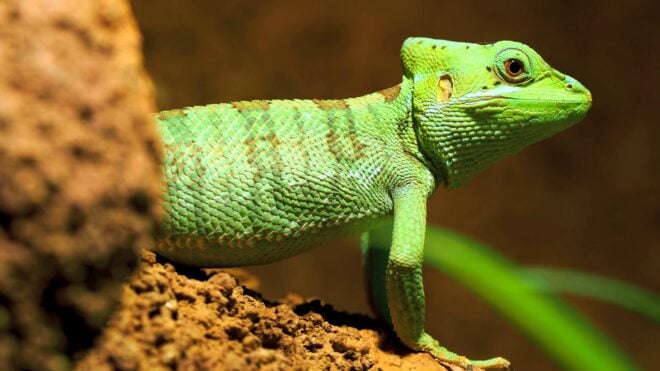When it comes to proper etiquette, I am by no means an expert.
I know that I shouldn't put my elbows on the table, and that I should chew gum with my mouth closed. But knowing the deeper intricacies of etiquette has never really interested me.
However, in the case of service dog etiquette, it is actually extremely important to know the dos and the don'ts.
It can be difficult to identify a service animal in the first place. And then it can be even more difficult to know exactly how you should or shouldn't act around them.
This exclusive piece reveals how to quickly and easily identify a service dog, and how you should behave in their presence.
For those training a service animal or utilizing one themselves, day-to-day life can be challenging enough. Anything we can do to make things easier is very important.
Scroll through below to see the proper way to act around a service dog. Some of these were actually quite surprising!
How Do You Identify A Service Dog? Look For The Vest
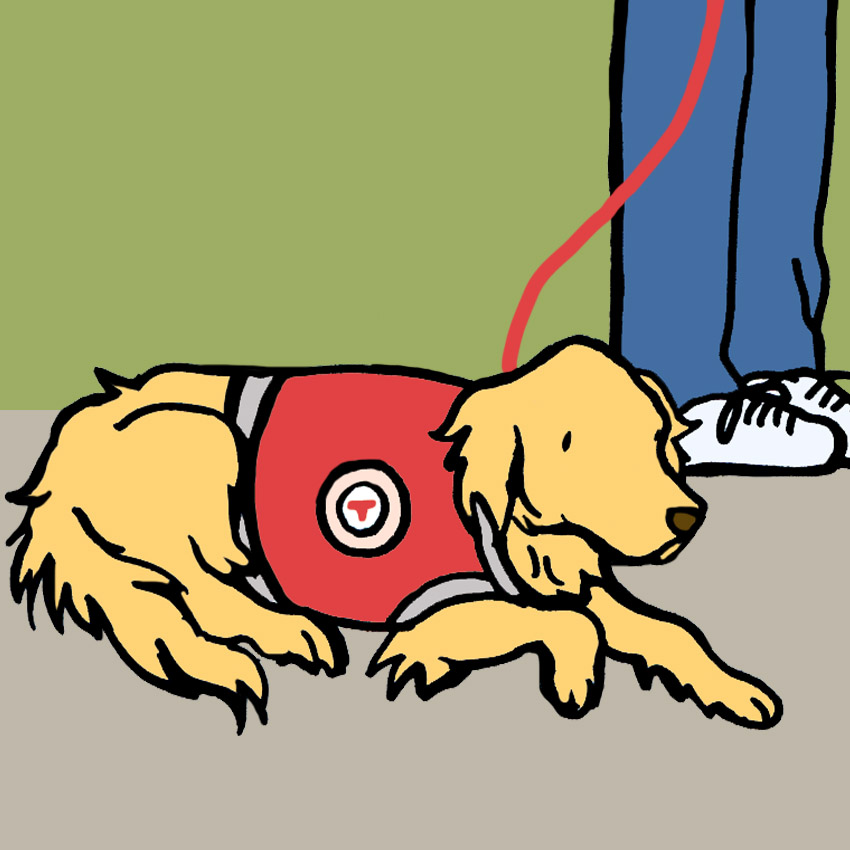
One way to identify a service animal is by looking for a vest.
The vest can be any number of colors, but is often used to let strangers know that the dog is a service animal and not simply an ordinary pet.
According to Anything Pawsable, "Service dog etiquette says when a service dog has a vest on or is in public with its handler or trainer, it is working, even if it appears as though it is not."
However, it is important to remember that even if there is not vest, the dog may be a service animal.
Pay Attention To The Handler Or Trainer
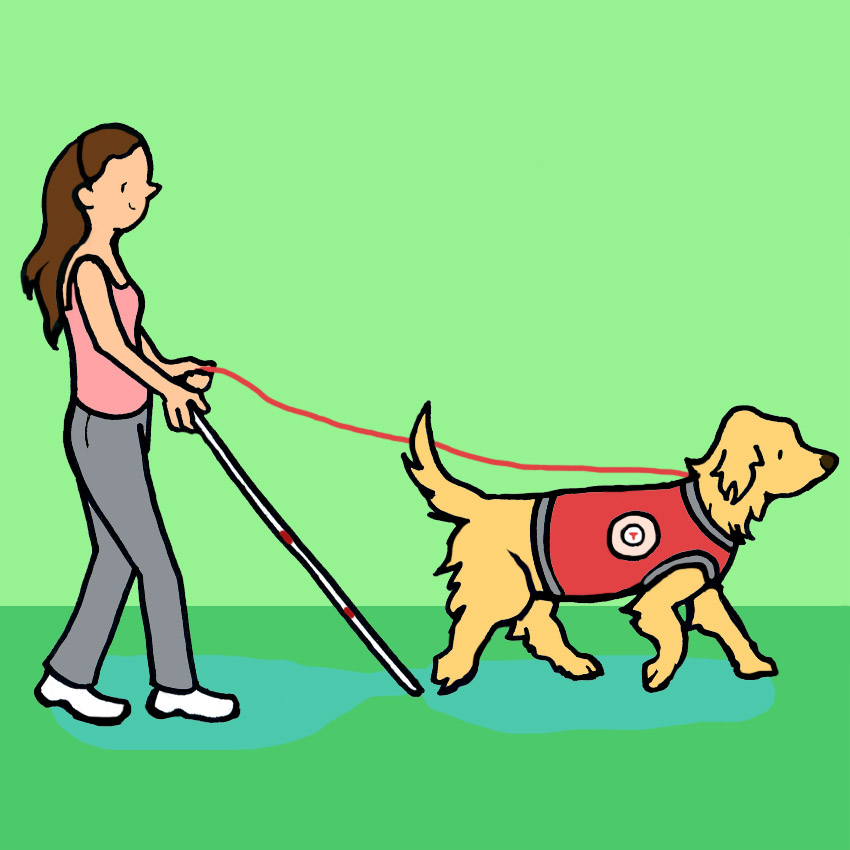
There are some situations where you will be able to observe a handler who is using a service animal to aid them with a disability.
One sign might be the white visual-impairment cane that certain people utilize.
However, according to Anything Pawsable, "Many handlers have 'invisible disabilities,' such as diabetes, hearing loss, or other symptoms not readily apparent."
This makes it extremely important to take your cues directly from the dog's handler.
When in doubt, it is best not to approach the owner and dog at all.
The Dos And Don'ts Of Service Dog Etiquette DON'T: Pet The Dog
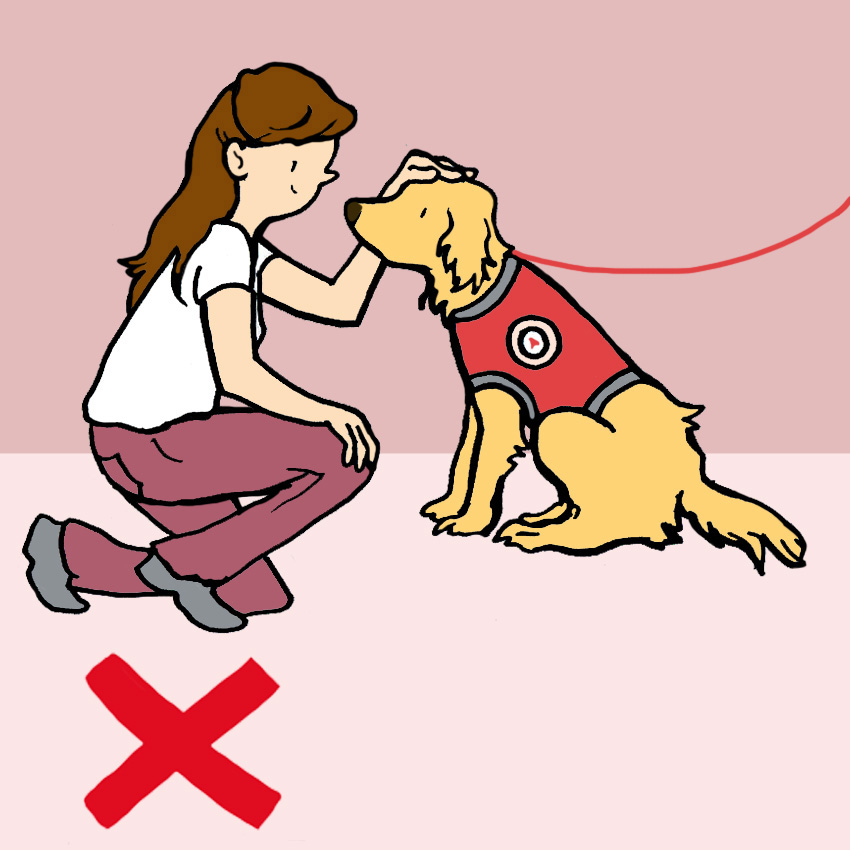
You should never approach and pet a strange dog without permission, but this is especially true of service animals.
Canine Companions for Independence writes that petting "may prevent the dog from tending to the human partner… Most dogs need to be told to be 'released' from work mode to interact with someone."
DON'T: Distract The Dog
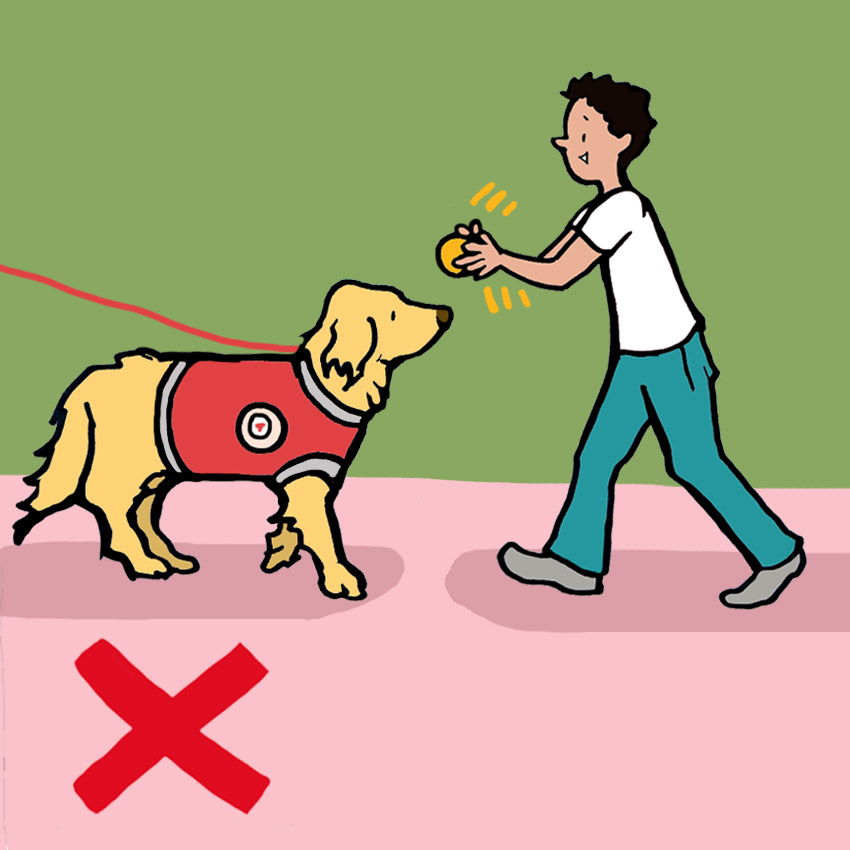
A service dog's focus is extremely important, and distracting him or her by calling or using loud noises can have a negative impact on their attentiveness to their handler.
According to Canineprofessionals.com, when you spot a service animal, you should avoid "talking, whistling, cooing, barking at the animal, tapping your leg, or clapping your hands."
DO: Treat Handlers With Respect And Dignity
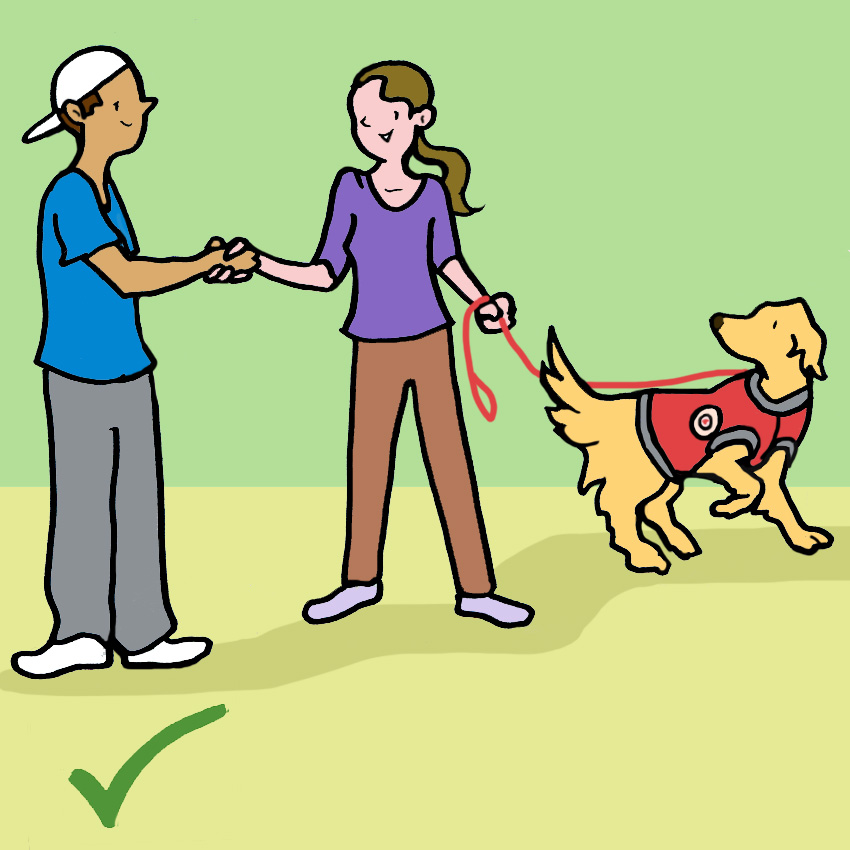
Service animal handlers deserve to be treated with the utmost respect and dignity.
According to Pleasedontpetme.com, you should "speak to the handler as you would anyone else, and do not ask personal questions about his or her disability."
DON'T: Feed The Dog
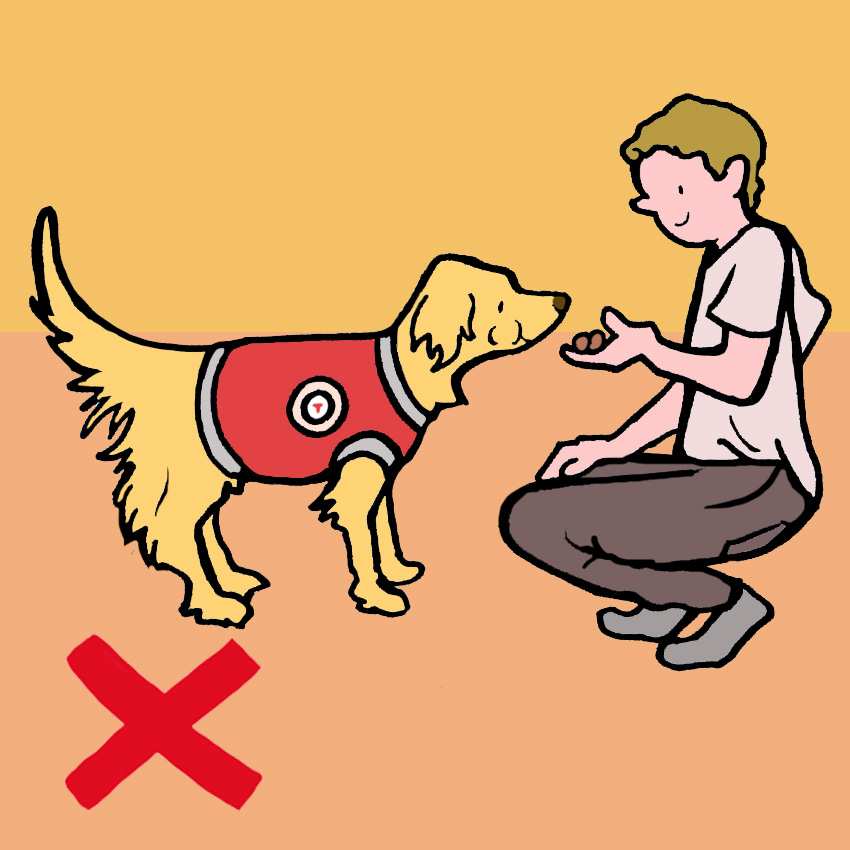
Offering food to a service dog is a very big "no-no."
PetMD writes, "Do not offer a service dog food or dog treats. Even though service dogs are trained to ignore food on the ground and not beg for treats, your offerings may serve as a distraction for the dog."
DO: Talk To The Handler First
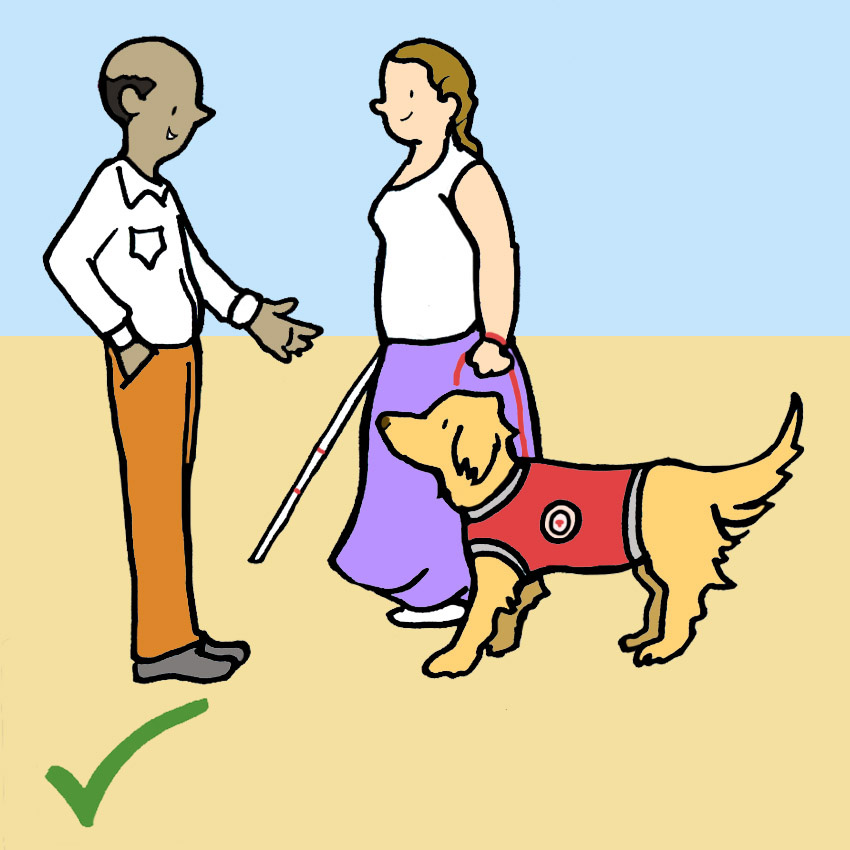
The best way to know exactly how to behave around a service animal is to ask the handler in a very polite manner.
According to PetMD, "The service dog and its handler are a team. And should you want to approach a service dog team, please speak to the person first."
DON'T: Stare Or Take Pictures
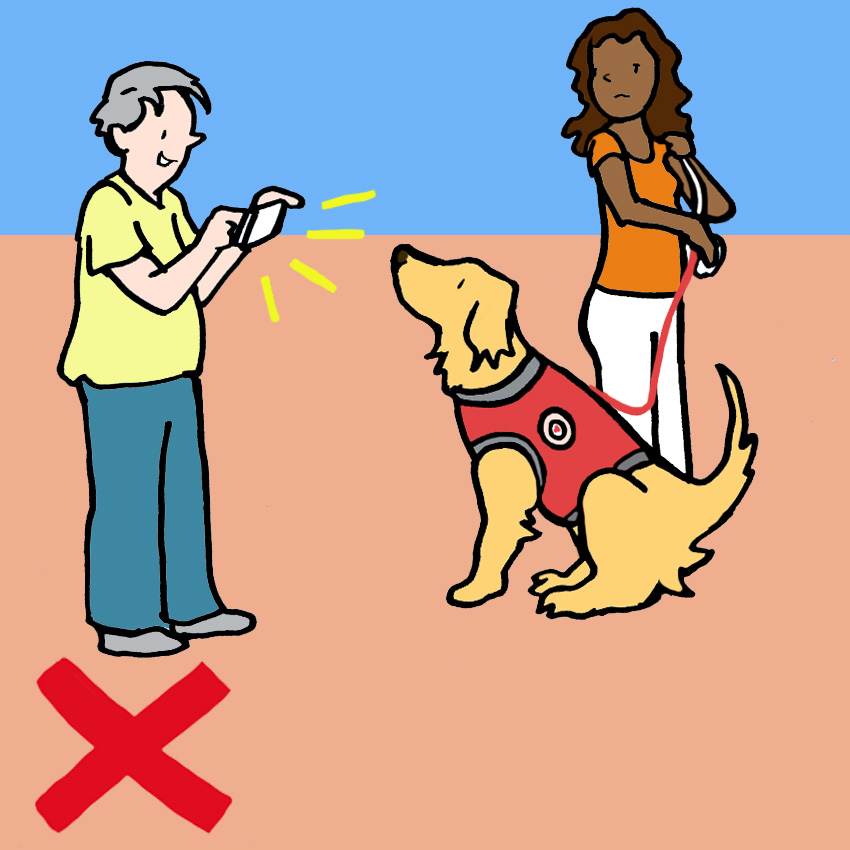
According to Pleasedontpetme.com, "Do not photograph or video record a service dog team without permission."
Staring or taking pictures shows a lack of respect and is generally considered to be rude.
DON'T: Approach With Another Animal
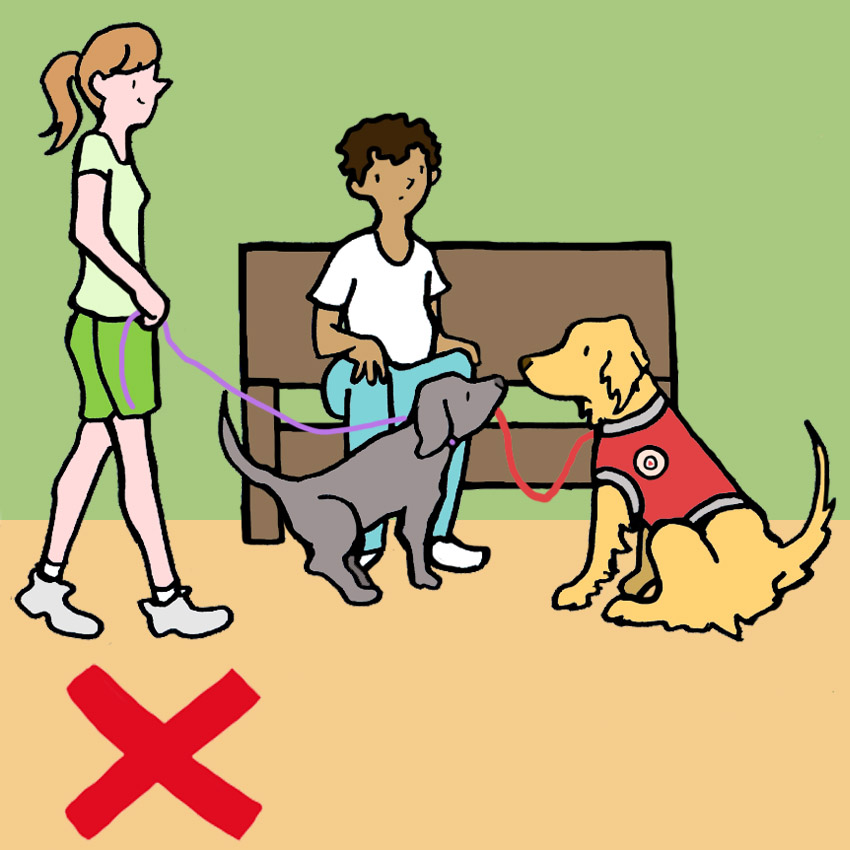
In the same way that you shouldn't distract a service dog by petting it or making loud noises, you shouldn't ever approach with another animal.
As much as you trust your pet to behave well, it can still be a large interference to the service animal that is currently "on the job."
DO: Use The Opportunity To Educate
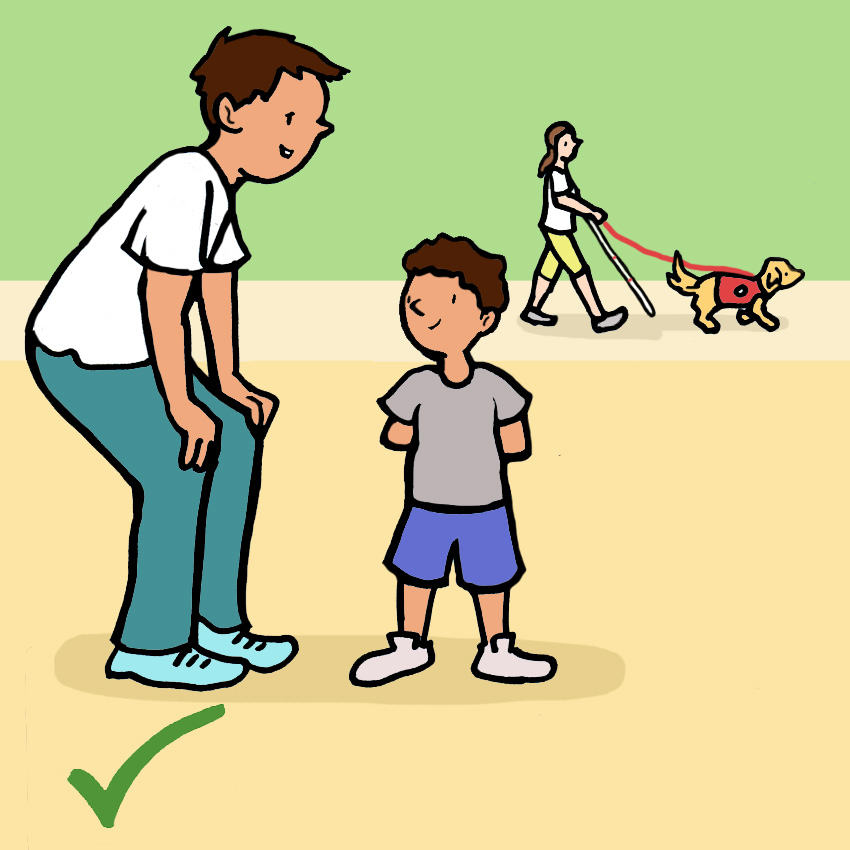
One of the great things about spotting a service dog is that you can use it as an opportunity to educate someone.
Pleasedontpetme.com suggests you "explain to children what a service dog does and why it is important not to interfere with the team's work. Also explain that not all disabilities are obvious to others."
Knowing how to identify a service dog, and being aware of the proper service animal etiquette, is extremely important to allowing the hander-canine team to properly function.
Do you have any other service dog etiquette suggestions? What experiences have you had with a service dog? Let us know in the comments.
Please SHARE this very important information with animal lovers everywhere!

